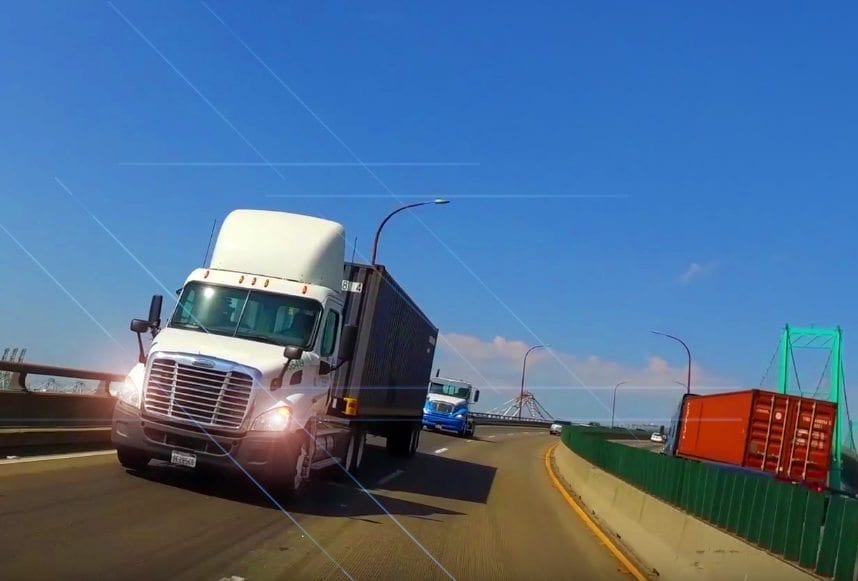According to the American Lung Association’s 2017 “State of the Air” report, 4 in 10 people in the U.S. live in counties with unhealthful levels of air pollution, which raises their risk of premature death, as well as increases their likelihood of developing lung cancer, cardiovascular disease, and asthma. This increase risk is evidenced by the fact that 25 million Americans, or 8% of our total population, suffers from asthma (source: Centers for Disease Control and Prevention).
Asthma can affect anyone regardless of race, gender, income, or residence; however, it disproportionately impacts children and lower income Americans in more urban environs. In fact, from 2001 to 2009, the greatest rise in asthma rates was among black children (almost a 50% increase), and about 1 in 6 (17%) of non-Hispanic black children had asthma in 2009, the highest rate among all racial/ethnic groups. While there are many factors that contribute to this growing public health epidemic, the transportation sector is a leading source of toxic air contaminants throughout the country.
The transportation sector is a leading source of toxic air contaminants throughout the country.
Heavy-duty vehicles (HDVs), like trucks and buses, total 7% of all vehicles on America’s roadways but they account for 50% of all smog-precursor emissions – including nitrogen oxide (NOx) and diesel particulate matter (DPM) – and 20% of all transportation-related greenhouse gases (GHGs).
HDVs are the fastest growing segment of U.S. transportation in terms of energy use and emissions, and today’s growing just-in-time delivery expectation and expanding goods movement industry ensure the number of trucks on our roads won’t be reduced anytime soon.
Simply put, if we want cleaner air, we need cleaner trucks. The good news is there is an immediate and commercially-available solution to this problem – near-zero-emission natural gas vehicles (NGVs).
NGVs have long been the choice of fleet managers interested in escaping the volatility of ever-changing gas and diesel prices. Natural gas powers passenger vehicles, short- and long-haul trucks, school buses, transit buses and shuttles, refuse trucks, construction and mining equipment, ships, and railcars.
Natural gas is affordable
Unlike oil, natural gas enjoys significant price stability over time.
Natural gas is widely available
With a well-established and growing infrastructure of 2,000+ CNG and LNG fueling stations, along with 2.5 million miles of pipeline, natural gas fuel is easily accessible.
Natural gas is abundant and domestic
Almost 98% of all natural gas consumed in the U.S. is produced in the U.S., and domestic reserves of natural gas are estimated to be twice that of petroleum based on current consumption – more than 100 years.
Natural gas contributes to our Nation’s energy security
Displacing diesel with natural gas reduces our reliance on petroleum-based fuels. Unlike electric, existing natural gas infrastructure can accommodate a spike in demand for transportation uses. And unlike traditional fuels, a spike in demand for NGVs won’t negatively impact residential energy rates.
Natural gas is cost effective and reduces maintenance costs
Its lack of lead means no fouling of spark plugs; crankcase oil does not become diluted or contaminated. Natural gas is cleaner burning, extending intervals between oil changes and tune ups, and does not react to metal, making it less corrosive. It is common for heavy-duty NGVs to run 1 million miles or more without reconditioning.
Natural gas is sustainable and the cleanest medium- and heavy-duty powertrain source with almost no emissions
The cleanest truck engines in the world are powered by natural gas. The Cummins Westport Ultra-Low NOx engine – made in America – is 90% cleaner than the EPA’s current NOx standard and 90% cleaner than its latest available diesel engine counterpart.
This technology is available for sale here in the United States right now, not in a projected five or even ten years as electric can only estimate today. The Cummins Westport product is certified by EPA and CARB to a 0.02 grams per brake horsepower hour (g/bhp-hr) standard, making it a zero-emission equivalent (ZEE). When renewable natural gas is used to fuel it, even greater CO2 and GHG emission reductions are achieved, up to 125% lower than diesel.
NGVs are powered by American fuel, American technology, and American innovation. They have the cleanest well-to-wheels emissions profile of any fuel on the market today, and NGVs are making a difference through a variety of applications – trucks, trash, transit, and even marine and rail.
The Volkswagen Environmental Mitigation Trust Settlement will provide $2.9 billion to states to make investments into cleaning their dirtiest air. If we are serious as a nation in investing in cleaner air today and a healthier tomorrow for our kids, using these resources to convert to natural gas can result in real reductions of toxic air contaminants.
We at NGVAmerica call on leaders to maximize the VW Trust value proposition, providing the most NOx reduction for funds expended by investing in NGVs. Affordable, mature, and ready right now, NGVs are the answer. Facilitate the switch to the pure power of natural gas transportation.


